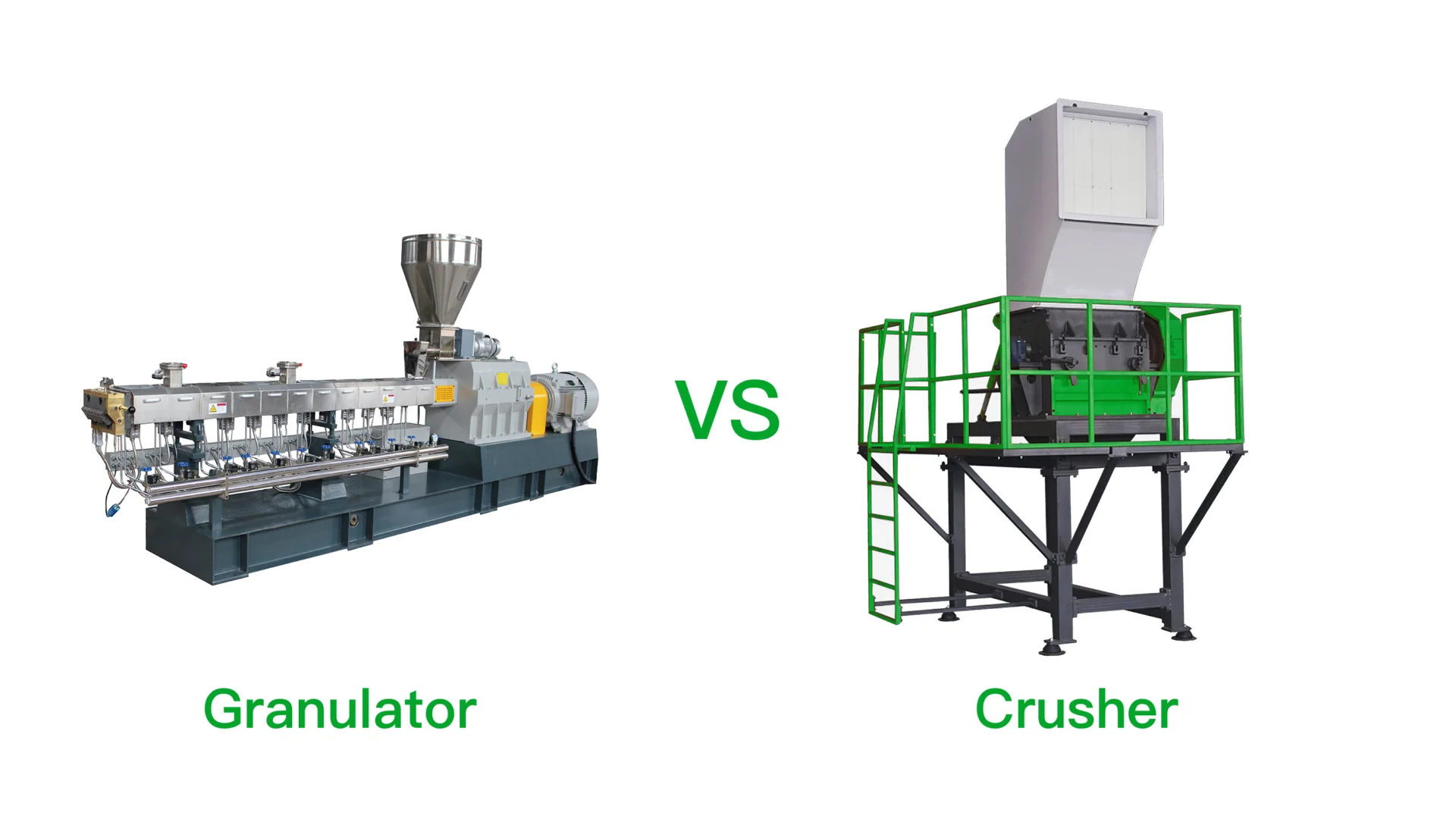Decoding the Crucial Tools in Recycling Operations
In the fast-paced world of recycling, where efficiency meets innovation, the spotlight often lands on two heavyweight champions: plastic granulators and plastic crushers. As the push for sustainability gains momentum, understanding the roles and differences of these devices is not just useful—it’s essential. Let’s break down what these machines do, why they’re important, and how they differ.
Contents
What’s the Different?
Plastic Granulators:
Imagine a device that can take your everyday plastic items and transform them into tiny, uniform pellets. That’s your plastic granulator for you. Operating through cutting and shearing, granulators are the go-to machines for breaking down large plastics into granules. These granules then go on to become the building blocks for new products, embodying the spirit of the circular economy.
Plastic Crushers:
Think of plastic crushers as the first responders for handling plastic waste. These machines are pros at crunching down plastic materials into smaller, uniform pieces through crushing actions like compression or impact. The main goal here? Reduce the volume of plastic waste, making it easier to handle and process down the line.
What Sets Them Apart?
Operation:
Granulators and crushers might seem similar, but they’re really different at the core. Granulators use sharp blades to slice through plastic, whereas crushers smash through materials using force. This fundamental difference affects everything from the texture of the output to the efficiency of the process.
Output:
Granulators are all about precision. They produce neat, consistent granules perfect for manufacturing. Crushers, on the other hand, are a bit more rugged, yielding smaller, irregular pieces that are great for further processing or even direct use in some industries.
Applications:
Due to their distinct ways of processing, granulators and crushers shine in different scenarios. Granulators are ideal for recycling larger plastic items—think containers and pipes—turning them into pellets suitable for molding and extrusion. Crushers excel at downsizing bulky plastic scraps into more manageable bits, perfect for easier recycling or disposal.
Wrapping It Up:
Both plastic granulators and crushers are indispensable in the quest to turn plastic waste into reusable resources. They’re crucial for promoting sustainability and helping keep our planet clean. By digging into how they operate, what they produce, and where they’re most effective, recycling operators can make smarter choices, pushing us closer to a true circular economy.
Got Questions? We’ve Got Answers:
- Choosing Your Fighter: What should you consider when picking between a granulator and a crusher for your recycling needs?
- Material Matters: Can granulators handle all types of plastics, from stiff to bendy?
- Safety First: What safety measures should operators follow when using these machines?
- Tech Talk: How are technological advancements shaping the capabilities of granulators and crushers?
- Global Impact: What role do these machines play in tackling the worldwide plastic pollution problem?
By understanding these tools of the trade, stakeholders in the recycling industry can better equip themselves to tackle the challenges of today—and pave the way for a greener tomorrow.




